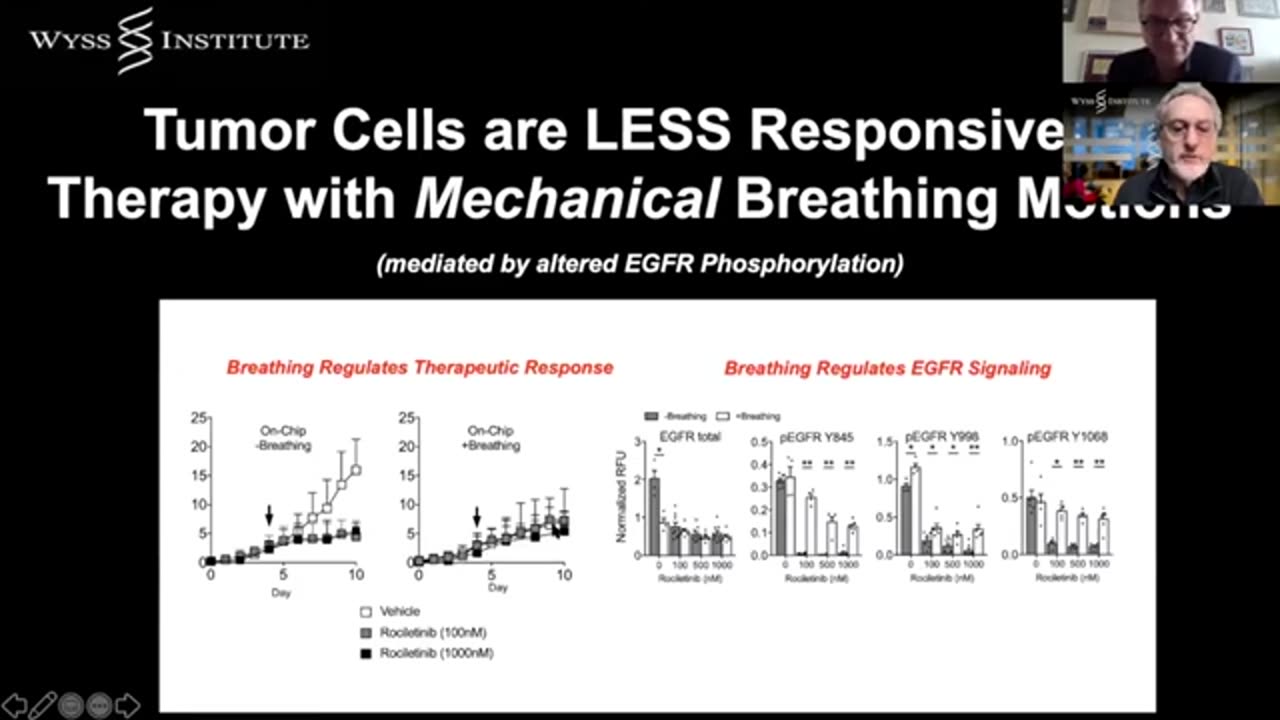Premium Only Content

Human Organ Chips - From experimental models to clinical mimicry - Wyss Inst.
More info: https://silview.media/?s=wyss
This presentation will highlight advances that my team at the Wyss Institute has made in the engineering of human “Organ-on-a-Chip” (Organ Chip) microfluidic cultured devices lined by living human cells that recapitulate organ-level functions as a way to replace animal testing for drug development, mechanistic discovery, and personalized medicine. I will describe the engineering of multiple human organ chips, including lung, intestine, kidney, bone marrow, liver, lymph node, and coupled blood-brain barrier and brain neuronal network chips. By recreating organ-specific physical and chemical microenvironments, including fluid flow, mechanical motions, oxygen gradients, and the presence of complex living microbiome, we obtain a level of biomimicry of organ-level functions not possible in other in vitro models. These Organ Chip models also have been adapted to develop multiple human disease models (e.g., pulmonary edema, asthma, COPD, influenza, colitis, environmental enteric dysfunction, lung cancer, esophageal cancer, radiation toxicity, and rare bone marrow disorders), identify approved drugs that might potentially be repurposed as COVID19 therapies, and discover new therapeutics. A Bone Marrow Chip was recently developed that precisely mimics human bone marrow toxicities induced by clinically relevant (pharmacokinetic) exposures to drugs as well as by radiation exposure, and it also was used to create personalized models of a rare genetic disorder of the marrow that provided new mechanistic insight into this disease (Chou et al., 2020). In addition, we engineered rat, dog, and human Liver Chips that recapitulate species-specific drug hepatotoxicities, which could help to replace use of these animals in preclinical drug development (Jang et al., 2019). Finally, I will describe how we have integrated multiple Organ Chips into an automated ‘Human Body-on-Chips’ that enables real-time analysis of cellular responses to pharmaceuticals, chemicals, radiation, and toxins, as well as quantitative in vitro-to-in vivo extrapolation of human drug pharmacokinetics and pharmacodynamics (Herland et al. 2020).
-
 5:06
5:06
SILVIEW.media
3 days agoTechnocracy and the Internet of Bodies
27 -
 1:47:36
1:47:36
Glenn Greenwald
3 hours agoJD Vance and Rand Paul Clash on Due Process: War on Terror Echoes; Has the U.S. Given Up on Confronting China? Ben Shapiro's Latest Falsehoods About Israel | SYSTEM UPDATE #510
60.8K28 -
 LIVE
LIVE
Nerdrotic
12 hours ago $2.49 earnedNerdrotic Nooner 513
386 watching -
 LIVE
LIVE
BigTallRedneck
2 hours agoRANKED FINALS W OMEGA
77 watching -
 LIVE
LIVE
Eternal_Spartan
9 hours ago🟢 Eternal Spartan Plays Final Fantasy 7 Rebirth Ep. 3 | USMC Vet | Join the Best Chat on Rumble
50 watching -
 LIVE
LIVE
megimu32
1 hour agoOTS: Ace Ventura & The Death of 90s Comedy
123 watching -
 LIVE
LIVE
We Like Shooting
14 hours agoDouble Tap 426 (Gun Podcast)
96 watching -
 LIVE
LIVE
Meisters of Madness
4 hours agoWuchang Returns with Madness & Ranked Finals
27 watching -
 LIVE
LIVE
Illyes Jr Gaming
1 hour agoBlack Ops 6 Action Reppin @Mystivis
56 watching -
 LIVE
LIVE
a12cat34dog
1 hour agoCRAZY NEW HORROR GAME :: Cronos: The New Dawn :: SPOOKY SEASON CAME EARLY {18+}
76 watching